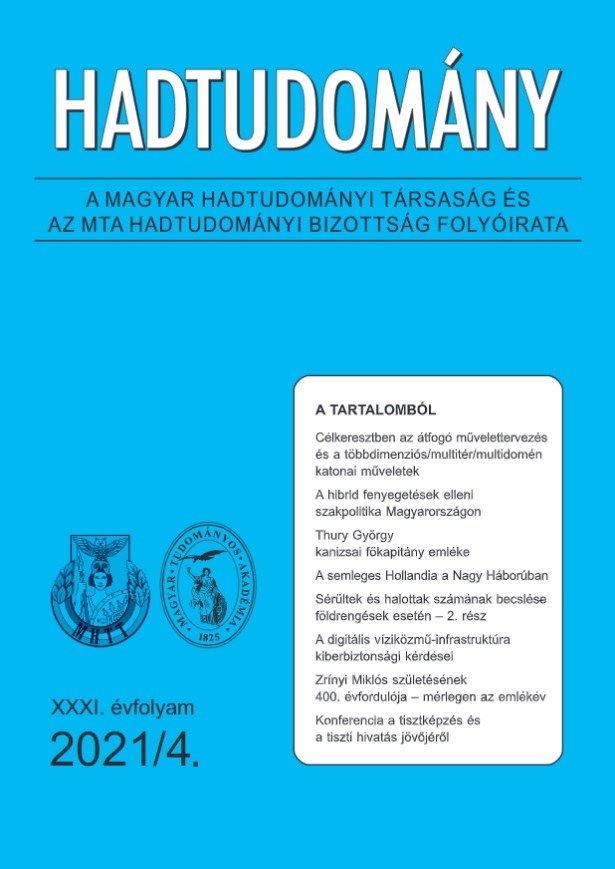Governmental Policy against hybrid threats in Hungary
Abstract
Hybrid warfare has emerged as a new type of security challanges, risks, and threats over the past decade that is playing an increasing role in shaping national, international, and allied security policies. The article examines the development and evolution of the national policy against hybrid threats in Hungary. Based on the evaluation of strategic documents and legislation, it demonstrates the two-step nature of hybrid defence which is built on the international cooperation, primarily with the European Union and NATO, and the gradual development of the successful national protection system. It presents the Hungarian perception of hybrid threats, the effects and results of allied cooperation on national development. The policy evolved at an accelerating pace between 2016 and 2021 as the results of hybrid attacks experience by unnamed parties, types of tools used, domains of hybrid activities, and the opportunities to build defence capabilities. The study evaluates in detail the cyber defence which is considered to be strong in Hungary in the international comparison, and describes the plans to strengthen the resilience of the state and the society. It examines the national management and leadership arrangements against hybrid attacks and supports professional proposals to integrate the external and internal threat management subsystems as the most appropriate form to deal effectively with complex hybrid mass attacks. The article points out that there is a need to widen the protection to another hybrid attack domains similar to what was achieved in the area of cyber defence. The analysis concludes that this requires the development and adoption of a national hybrid strategy.




